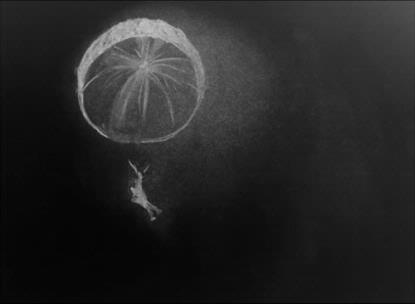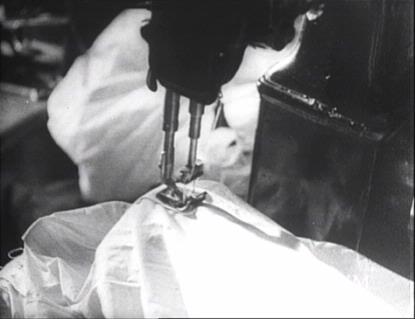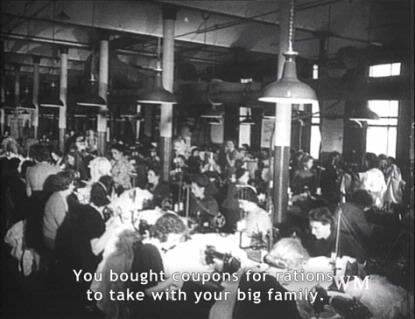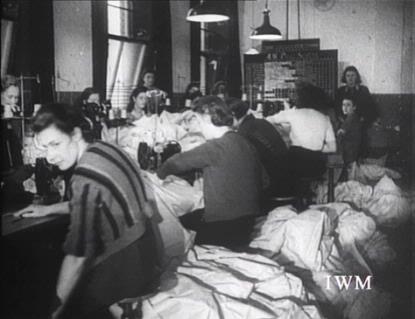
I remember my grandmother sharing stories of her days growing up in Oklahoma, after her family emigrated from Lebanon. She described her family’s small house situated on the expansive Oklahoma plains during the dust bowl that swept the state. Each time she told her stories, images emerged in my mind of my grandmother as a teenager, young and beautiful, going about her days in a hazy time period so different from my own. The images in my head were less like an old reel of film, and more like a series of drawings that built up and moved in step with the rhythm of my grandmother’s speech. Looking back, I realize that what I saw in my mind’s eye was an animated moment of my grandmother’s memory.
My experiences of listening to stories as a child have influenced the stories that I now feel compelled to tell in my documentary art and film work. I record oral histories with individuals who recount personal experiences of public events in history. Often, these personal experiences are tinged with sadness and pain, of individuals caught in war or brutal circumstances. Visualizing their accounts with stop-motion animation gives access to their stories in much the same way that my imaginative response to my grandmother’s story allowed me to picture her as a young woman: the animation allows us to momentarily imagine the invisible memories of the participants of the film, transforming the once solitary act of remembrance into a shareable experience.
I first explored the combination of oral history and animation in a film and installation titled, From Twilight til Dawn. The piece is a personal documentary that gives visual expression to the experience of three soldiers: my father, an Army paratrooper in the Vietnam era, Henry, a WWII paratrooper in Italy, and my grandfather, who never directly shared his WWII experiences with me before he died. The video consists of interviews, archival footage, and hand drawn stop-motion animation. The narrative of the film is sad and difficult, and I attempt to visually and conceptually work through the story with the animation. The lines of the chalk drawings build up, frame by frame, to create a completed image that is then wiped away. All that remains on the screen and the paper are the dust of the chalk and a faint impression of the image that no longer exists.
I believe that the ephemeral animation of the film speaks to the fragility and transience of our human experience, a reality that is augmented and amplified by the horrors of war. The painstaking process of stop-motion created an opportunity for me as the filmmaker to contemplate, one frame at a time, the painful experiences of the soldiers in the film. The animation addresses the difficulty of wiping away memories of war; while the details may fade, the impressions remain, unconsciously manifesting themselves in soldiers and their families over generations.
Through the process of creating From Twilight til Dawn, I explored animation’s ability to give image and weight to an individual’s memory. I will continue this process in Seams, my current film-in-progress about Irish women and the Second World War. The film will explore Ireland and Britain’s complex and changing relationship over the last eighty years through the memories and lives of elderly Irish women from the North and the South who participated in the war as factory workers and soldiers. The film will attempt to give the women a platform to remember and to be remembered. Much like From Twilight til Dawn, Seams will re-imagine the women’s stories through interviews, archival footage, and stop-motion animation. The animation will visualize the storyteller’s memory, and it will also serve as a form of documentation. Anglo-Irish relations were tense at the time of the Second World War, and very little documentation exists of the Irish women’s contribution to the war. I hope that the animation will serve as an imaginary documentation of the women’s experience of history, allowing us to bear witness to their memory of the past from the hazy vantage point of the present moment.



I believe that animating oral history is an engaging form of documentary storytelling. It can protect the individual recounting the story, maintaining their privacy by creating an aesthetic distance between the speaker and the viewer. At the same time, animation also initiates a creative space for the viewer to actively employ their own imagination in the film, promoting an empathetic and tender response to the stories being told. Animation in non-fiction filmmaking allows for a poetic interweaving of imagination and memory.


